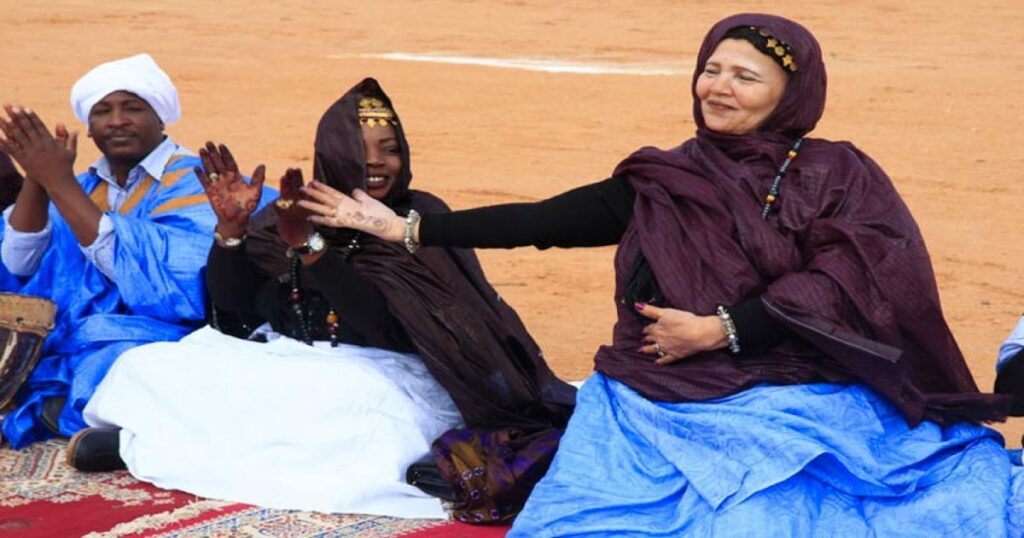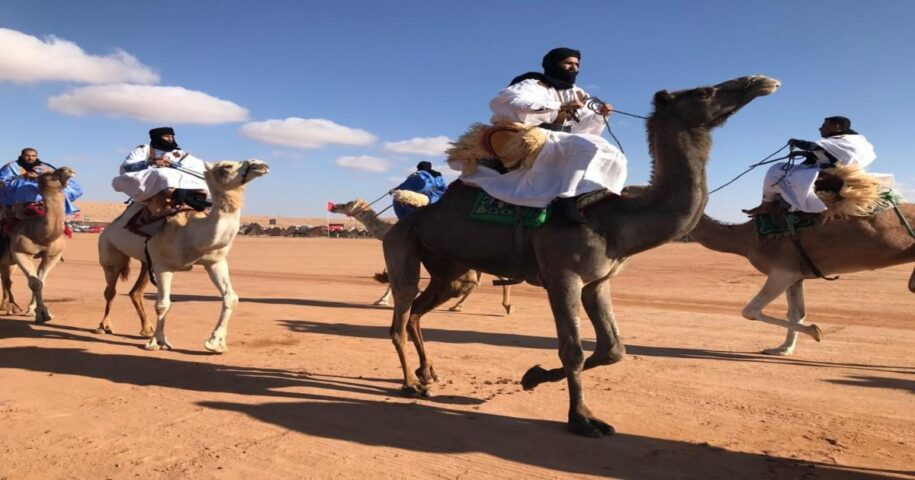Introduction
“The Moussem of Tan-Tan, in southwest Morocco, is an annual meeting of Saharan nomads that brings together over thirty tribes from southern Morocco as well as tribes from adjacent countries.”
Every year around May, it was recorded on the nomads’ agropastoral calendar.
It was a time for reunions, trade, information exchange, camel and horse competitions, but it was also a time to celebrate marriages, visits, and reconciliations.
This event was an occasion to celebrate diverse cultural manifestations like as music, popular songs, games, poetry jousts, and other Hassani oral traditions.
This ceremony assumed the shape of a Moussem following the death of Mohamed Laghdaf, a saint and ardent resister, in 1963, giving him this holy element.
UNESCO declared it Oral and Intangible Heritage of Humanity in 2005, and it was placed on the Representative List of Intangible Cultural Heritage of Humanity in 2008.”

The Spirit of Tan-Tan Moussem
Tan Tan’s Moussem is a live and unique witness to the richness and complexity of the Saharan nomads’ cultural history.
This yearly event represents peace and tolerance and serves as a focal point for cultural and economic interchange among the region’s tribes.
The Moussem of Tan-Tan is an annual meeting of Saharan peoples that brings together more than thirty tribes of southern Morocco and other nomadic peoples of northwest Africa.
A unique Moussem
The Moussem of Tan-Tan provides a wonderful chance for the tribes of the region to meet and reconnect with their ancestors.
Aside from the joy of the reunion and other festive and commercial activities, it also allows tribal notables and dignitaries to address matters relevant to their life and social unity.
Read also: Kalaat M’gouna in Morocco
A decade of emotions
The Moussem has gained notoriety, fame, and recognition in recent years, thanks to the presence of many prestigious guests, including eminent personalities from the worlds of culture, arts and cinema, sciences and media, ministers, ambassadors, teachers, researchers, members of international renown associations… Who took part in the celebrations at the Place of Peace and Tolerance?
Important dates
- 2004: His Royal Highness Prince Moulay Rachid and Mr. Koichiro Matsuura, Director General of UNESCO, launch the inaugural edition of the Moussem of Tan Tan after several years of hiatus in 2004.
- 2005: UNESCO declared it a “Masterpiece of Humanity’s Oral and Intangible Heritage.”
- 2008: The Explorers Club’s New York members and president, Alan Nichols, were in attendance.
- 2013: Tan-Tan Moussem inscribed on the Representative List of Humanity’s Intangible Cultural Heritage.
- 2014: The United Arab Emirates is the honorary guest of Moussem’s tenth edition.
- 2015: The 11th edition of the Moussem honors Tunisia, and the State of the United Arab Emirates is a constant partner of the Almouggar Foundation in organizing the Moussem.
- 2016: The Moussem of Tan Tan, a confluence of multiple Morocco, celebrates the Kingdom’s 12 regions.
- 2017: Senegal is highlighted as a cultural treasure shared by Morocco and Africa. Barid el Maghrib issued a special postal stamp honoring the Moussem.
- 2018: The People’s Republic of China is honored by the Moussem of Tan-Tan, a vector of Hassan’s cultural impact.
The event
This internationally recognized event seeks to commemorate nomadic culture by emphasizing and preserving the numerous features of the citizen’s everyday existence as a tool for the region’s long-term development.
The Royal Vision’s correctness in the cultural area is confirmed by UNESCO’s acknowledgment of this Moussem and its registration as a masterpiece of oral and intangible heritage.


Leave a Reply